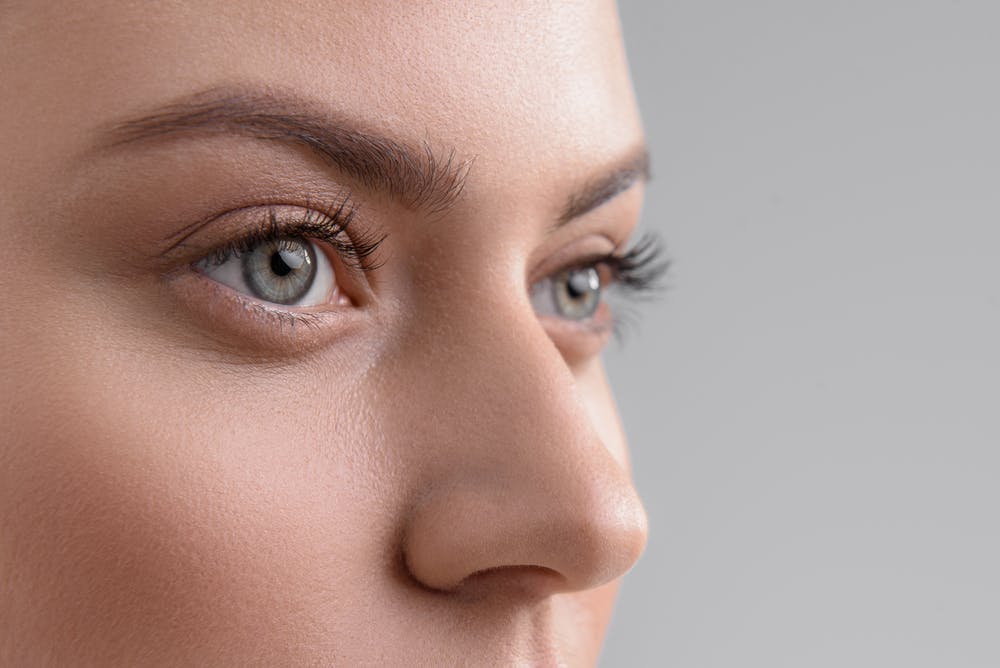
Navigating the world of rhinoplasty can be a complex endeavor, especially when you’re faced with terms like “thick skin rhinoplasty” and “thin skin rhinoplasty.” Understanding the nuances between these two can be the key to achieving the nose shape you desire. This article aims to serve as your comprehensive guide, comparing thick skin vs. thin skin rhinoplasty. We’ll delve into the benefits, disadvantages, and features of each, helping you make an informed decision. So, let’s get started.
What is Thick Skin Rhinoplasty?
Thick skin rhinoplasty is a specialized form of cosmetic nasal surgery designed for individuals who have thicker skin covering their nasal framework. The unique characteristics of thicker-skinned patients present both challenges and opportunities in the realm of rhinoplasty. The thickness of the nose skin is a strong factor in rhinoplasty that can significantly influence the surgical outcome, from the initial rhinoplasty surgery to the complete healing process involving soft tissues.
The Anatomy of Thick-Skinned Noses
Thick-skinned noses often have a fatty layer beneath the skin envelope, which can make the nose appear bulkier or less defined. This fatty layer can also affect how well the skin drapes over the cartilage and bony framework, thereby influencing the nose’s final shape after surgery. Understanding the anatomy of thick-skinned noses is crucial for both the patient and the rhinoplasty surgeon to set realistic expectations.
Surgical Techniques Tailored for Thick Skin
When dealing with thicker-skinned patients, specialized surgical techniques are often required. Cartilage grafts are frequently used to reinforce the nose structure, providing the necessary support to achieve a desirable shape. Additionally, contour irregularities that might be hidden in thin-skinned patients can become more pronounced in those with thicker skin, requiring extra attention to detail during the cosmetic procedure.
Healing Process in Thick Skin Rhinoplasty
Healing milestones can differ for thick-skinned patients. Steroid injections are sometimes used to reduce swelling and aid the healing process. However, extra care must be taken to avoid complications like skin thinning.

What is Thin Skin Rhinoplasty?
Thin skin rhinoplasty is a form of aesthetic surgery specifically designed for individuals with thinner skin covering their nasal structure. Unlike thick-skin rhinoplasty, where the focus may be on providing additional support to the nasal framework, thin-skin rhinoplasty often centers on precision and subtlety. The surgical techniques and healing process can differ markedly from those used in thick skin rhinoplasty, making it essential to understand the nuances involved.
The Anatomy of Thin-Skinned Noses
Thin-skinned noses typically have less fat tissue beneath the skin envelope, which can make the underlying bone structure and cartilage more visible. This lack of a fatty layer means that any subtle irregularities in the nasal skeletal framework can be more easily seen, requiring a higher level of surgical precision. Understanding the anatomical differences in thin-skinned noses is crucial for setting realistic surgical expectations.
Surgical Techniques for Thin-Skinned Patients
In thin-skin rhinoplasty, the surgical techniques often involve meticulous refinement. Because the skin is thin, it will readily conform to the underlying structure, making even minor irregularities noticeable. Therefore, surgeons may use techniques like cartilage shaving or suture methods to achieve a smoother, more natural-looking result. The goal is to create a nose that complements your facial features without drawing undue attention to itself.
Healing Process in Thin Skin Rhinoplasty
The healing process for thin-skinned patients is generally quicker. However, because the skin is thin, any asymmetries after surgery or scar tissue can be more visible.
Thick Skin vs Thin Skin: Aesthetic Considerations
When it comes to aesthetic surgery like rhinoplasty, skin elasticity plays a key role. Thicker skin can be more forgiving, masking minor imperfections. On the flip side, thinner skin allows for more detailed refinement.
Thick Skin: Pros and Cons
- Pros:
- Better at hiding minor imperfections
- Less prone to showing scar tissue
- Cons:
- May require more aggressive surgical techniques
- Longer healing process
Thin Skin: Pros and Cons
- Pros:
- Allows for more detailed work
- Quicker healing process
- Cons:
- More prone to showing imperfections
- Scar tissue can be more visible
How Does Skin Type Affect the Surgical Procedure?
The type of skin you have can significantly impact the cosmetic procedure. For instance, thicker skin may require the use of additional cartilage, while thinner skin may not.
Thick Skin and Cartilage Grafts
In thicker-skinned rhinoplasty patients, cartilage grafts are often used to provide additional support to the nasal skeletal structure. This is essential for achieving a balanced and harmonious look.
Thin Skin and Surgical Precision
For thin-skinned patients, the surgical procedure often involves more detailed work. The surgeon must be extremely precise to ensure that the thinner skin will conform well to the new nasal shape.

What About Skin Quality?
Skin quality is another factor to consider. Factors like sun damage or oily skin can affect both the surgical outcome and the healing process.
Thick Skin and Oily Skin
Thicker nasal skin is often associated with oily skin, which can affect the healing process. Proper plastic surgery techniques must be employed to ensure healthy tissue and optimal results.
Thin Skin and Sun Damage
Thin skin is often more susceptible to sun damage, which can affect the healing process. Extra precautions may be needed to ensure a smooth recovery.
How to Choose the Right Surgeon?
Choosing a board-certified plastic surgeon or facial plastic surgeon who specializes in rhinoplasty is crucial. A skilled surgeon will assess your skin type and tailor the surgical techniques accordingly.
Experience Matters
Look for a rhinoplasty specialist with a proven track record in handling both thick-skinned and thin-skinned rhinoplasty patients. Their expertise will be a key factor in achieving the best possible outcome.
Consultation is Key
A thorough consultation will allow the surgeon to evaluate your skin type, nasal shape, and other additional factors that may affect the surgical outcome. This is the time to ask questions and clarify any doubts.
In conclusion, whether you have thick or thin skin can greatly influence your rhinoplasty outcomes. Each has its own set of pros and cons, and the right surgical approach can make all the difference. If you’re considering a nose job, scheduling a consultation with Dr. Panossian can provide you with personalized advice tailored to your unique needs.


